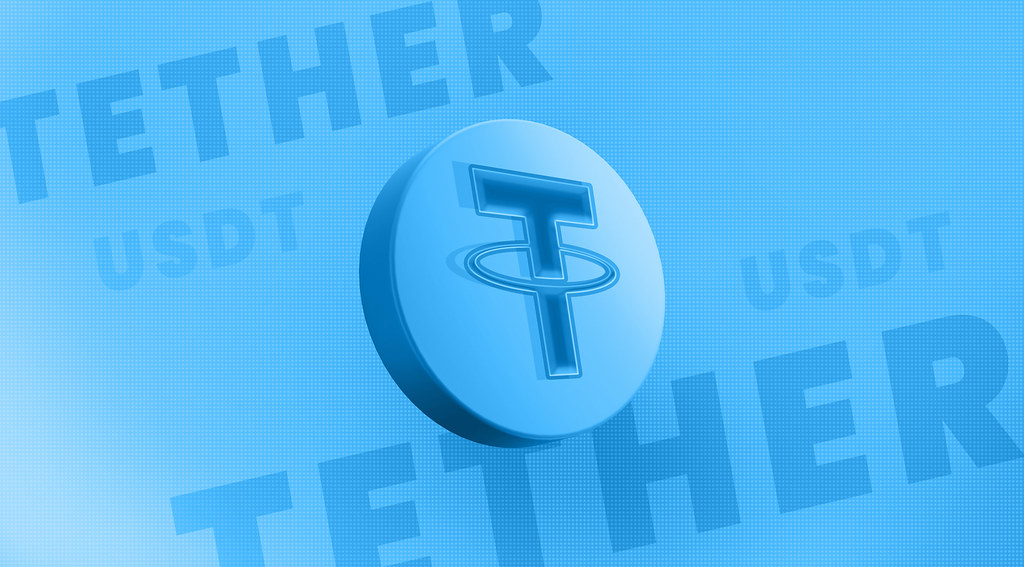Main Points:
- USDT now controls 75% of the stablecoin market, with a market cap of $118 billion.
- Over the last two years, USDT’s market share grew from 55% to 75%, while rivals struggled.
- Stablecoins like USDT play a crucial role in emerging regions like Latin America and Southeast Asia for cross-border transactions and payments.
- Competitors like USDC and BUSD have seen declines due to crises and regulatory issues.
- New entrants like PayPal’s PYUSD have yet to challenge USDT’s dominance.
USDT’s Rapid Growth and Market Domination
In the world of stablecoins, USDT (Tether) has solidified its position as the undisputed leader. According to Token Terminal, USDT now commands a staggering 75% of the stablecoin market, a substantial leap from the 55% share it held just two years ago. The growth is not just in market share but also in the sheer volume of USDT tokens in circulation. In the past two years, its supply has nearly doubled, soaring from $65 billion to an impressive $118 billion, reinforcing its status as one of the top three largest cryptocurrencies, behind only Bitcoin (BTC) and Ethereum (ETH).
This dominance highlights how USDT has become indispensable for traders, investors, and businesses that rely on stablecoins as a bridge between traditional fiat currencies and the volatile world of digital assets. Its liquidity, reliability, and network effects make it the go-to stablecoin for cross-border transactions, remittances, and savings in regions like Latin America and Southeast Asia.
The Role of Stablecoins in Emerging Economies
One of the critical roles that stablecoins like USDT play is in providing a digital solution for financial transactions in emerging economies. According to a report by Castle Island Ventures and Brevan Howard Digital, stablecoins are becoming increasingly popular in regions like Latin America and Southeast Asia. In these regions, stablecoins offer an easy way to store and transfer value in U.S. dollars, especially for those who might not have access to traditional banking services.
In countries where inflation rates are high, or the local currency is unstable, stablecoins provide a hedge against currency devaluation. By pegging their value to the U.S. dollar or other assets, stablecoins like USDT offer a stable medium for everyday payments, savings, and cross-border transfers, making them an essential tool for millions in these regions.
Challenges for USDT’s Rivals: USDC and BUSD
The meteoric rise of USDT can be partly attributed to the struggles of its competitors. USD Coin (USDC), once considered a formidable rival to USDT, has seen its market capitalization shrink dramatically. The collapse of Silicon Valley Bank, one of its reserve partners, during the U.S. regional banking crisis of March 2023, shook investor confidence. Although USDC quickly restored its peg to the U.S. dollar, the damage was done. Investors shifted their trust to USDT, leading to a decline in USDC’s market cap from $50 billion to $35 billion over the past two years.
Another competitor, Binance USD (BUSD), issued by Paxos under Binance’s brand, also faced severe setbacks. In early 2023, BUSD was ordered to cease operations by New York State regulators. At its peak, BUSD was the third-largest stablecoin, with a market cap exceeding $20 billion. Its shutdown left a vacuum that further strengthened USDT’s position in the market.
New Entrants in the Stablecoin Space
Despite the dominance of USDT and USDC, new entrants are trying to carve out a niche in the stablecoin market. PayPal recently launched its PYUSD token, which aims to leverage PayPal’s extensive global network to bring stablecoins to the mainstream. Additionally, decentralized alternatives from blockchain applications like Aave and Curve have introduced new tokens, providing more options for users seeking decentralized stablecoin solutions.
However, these new entrants have yet to challenge the centralized giants like USDT and USDC. The market dominance of these two stablecoins is deeply entrenched, thanks to their liquidity, network effects, and widespread adoption. Even though new stablecoins bring innovation, they have a long way to go before they can dethrone the current leaders.
Tether’s Financial Strength and Reserves
One of the key factors contributing to USDT’s dominance is its robust financial backing. As of Q2 2024, Tether’s reserves are managed by Cantor Fitzgerald, a global financial services company based in New York. Tether’s reserves include over $97 billion in U.S. Treasury bonds and repurchase agreements, providing a solid financial foundation for its issuance.
According to Token Terminal, Tether generates approximately $400 million in monthly revenue from the yields on these reserve assets. This income stream ensures that Tether has the financial strength to continue expanding its supply and maintaining user confidence in the stability of USDT.
Why Users Prefer USDT
Several factors contribute to USDT’s continued popularity among users. First, USDT benefits from network effects, meaning that the more people use it, the more valuable and useful it becomes. Second, users trust USDT because it has a long track record of maintaining its peg to the U.S. dollar, even during periods of market turbulence. Lastly, its liquidity is unmatched. Whether for trading, payments, or remittances, USDT offers a level of liquidity that few other stablecoins can match.

The Road Ahead for Stablecoins
The stablecoin market is expected to grow even further in the coming years, particularly in regions that require dollar-denominated assets for everyday transactions. As blockchain technology continues to evolve, stablecoins will likely become even more integrated into traditional financial systems, offering new opportunities for growth in both developed and emerging markets.
USDT’s dominance may continue for the foreseeable future, but challenges remain. Regulatory scrutiny is likely to increase, especially as stablecoins become more intertwined with traditional finance. Furthermore, the rise of decentralized alternatives and new entrants means that Tether must remain vigilant and continue to innovate to maintain its lead in the market.
USDT’s rise to control 75% of the stablecoin market highlights the growing importance of stablecoins in the global economy. Its dominance is driven by a combination of factors, including its liquidity, user trust, and financial backing. While rivals like USDC and BUSD have faced setbacks, new entrants like PYUSD are still far from threatening USDT’s position.
As the stablecoin market evolves, it is clear that USDT will continue to play a pivotal role, especially in regions where traditional banking systems fall short. However, the future will bring new challenges, including regulatory scrutiny and competition from decentralized alternatives. The road ahead for USDT and stablecoins is full of opportunities and challenges, but one thing is certain: stablecoins are here to stay, and USDT is leading the charge.


